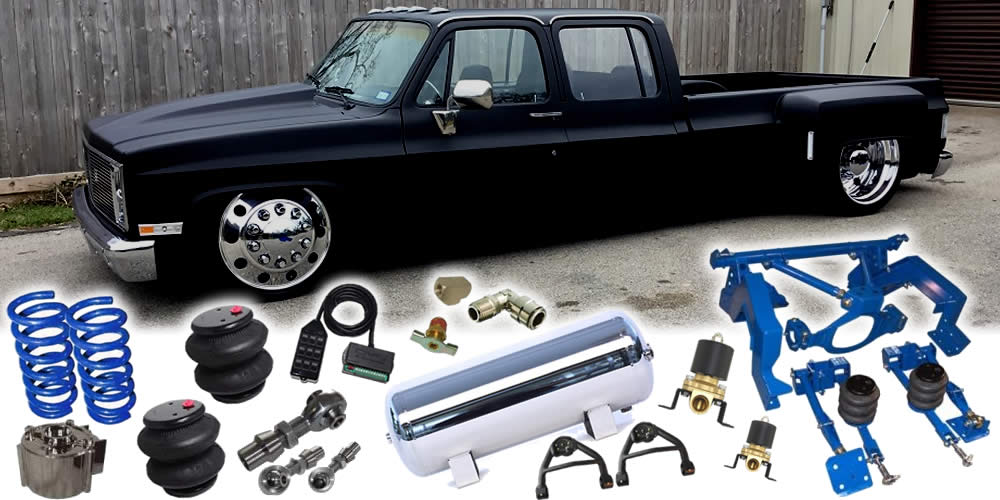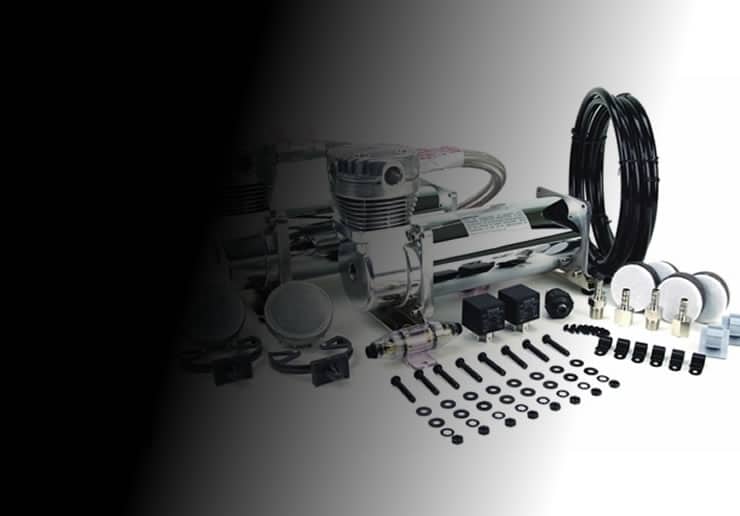No products in the cart.
Suspension systems control how a car rides, handles, and responds to various road conditions, making them crucial components of automotive technology. Among the many different suspension systems that can be fitted, hydraulic suspension and air suspension kits are two popular options. We will look at the main differences between air suspension kits and hydraulic suspension kits in this in-depth research, along with the numerous advantages of each kind. Regardless of whether you are an avid driver seeking to customize your vehicle or a curious motorist searching for the best suspension option, this article will assist you in making an informed choice. It is beneficial for drivers of both stripes to read this material.
What is Hydraulic Suspension?

Hydraulic suspensions can have two to four independent dampers and operate using hydraulic fluids. Depending on your preference, each damper in your car may be adjusted to depressurize or pressurize, allowing you to travel as high or low as you choose while driving.
Instead of using springs to absorb the forces applied by the road, this system uses pressurized gas and oil. The synthetic rubber and tire air absorb some of the force applied to the car when you drive over a bump. A large amount of the force is sent to the wheel, which is transmitted to the frame and finally to the driver and passenger.
Each chamber has a diaphragm, and the wheel movement transfers oil from one to the other through a damper valve. The gas inside the diaphragm is being compressed, and this pressure is created by the pumping fluid and is reflected off of it. Once the oil is forced back into the first chamber by the rebound, your wheel will have no choice but to make contact with the ground.
Read More – How to Install an Air Suspension System in Your Car?
Hydraulic suspension
- Since they were first used some decades ago, hydraulic suspension systems—also known as hydropneumatic suspensions—have gained a reputation for offering a comfortable and smooth ride. These systems control the hydraulic fluid flow to alter the height and stiffness of the suspension system on the car. Regarding hydraulic suspension, it is imperative to bear the following points in mind:
- Regarding performance, hydraulic suspensions are well known for offering better handling and ride quality than other suspensions. They can soften for a smooth highway ride and then tighten for improved handling around curves.
- With hydraulic suspensions, ride height may be precisely adjusted, making raising or lowering the vehicle’s height simple. The flexibility to adjust is yet another advantage of hydraulic suspensions. This flexibility could enhance both the look and the performance.
- Because of their greater complexity, hydraulic suspension systems are usually more expensive and difficult to install than air suspension kits. In addition to constantly requiring expert maintenance, they frequently develop leaks.
Hydraulic suspension systems are frequently more expensive than air suspension kits due to their complexity, both in terms of the initial outlay and ongoing maintenance expenses.
What is Air Suspension?
The use of air suspensions in aftermarket modification kit combinations and original equipment manufacturer (OEM) applications is growing. These systems consist of air springs, fittings, and mounts. These systems work similarly to hydraulic systems, but they must have air and air springs to function.
Inflating the air springs will increase your car’s suspension, and releasing the air from them will lower the ride height of your car. Active air suspensions can automatically adapt to changes in the road. Some systems even allow you to adjust the ride height to your preferred comfort level.
Compared to their conventionally installed equivalents, air suspensions provide a higher level of ride adjustability since air shocks are utilized instead of struts and shocks. Components of these systems include an air compressor, a manifold, air struts, airlines, and an air tank.
Every one of these parts helps to pressurize the air that they absorb and distribute to the different struts. You can operate these gadgets with wired or wireless controllers, as well as your smartphone, depending on your setup.
Read More – 2006-2010 Kia Sportage Rear Air Suspension, Strut Kit (no fittings)
Air Suspension Kits
- Conversely, air suspension kits have been increasingly popular over the past few years, especially in the world of customized and altered cars. Both ride height and suspension stiffness are adjustable with these systems thanks to the use of compressed air. When choosing air suspension kits, keep the following points in mind:
- Because of their versatility, air suspension kits are widely recognized for their extensive range of applications. For daily driving, they can generate a smooth and pleasant ride, and when necessary, they can be adjusted to produce a sportier experience.
- Air suspension kits offer adjustability in the same manner as hydraulic suspensions do. You can exactly control the ride height. Numerous kits are available, and many have programmable controllers that allow you to store several settings for height.
- Installing air suspension kits is easier than installing hydraulic systems. Many DIY enthusiasts choose air suspension kits since they are less expensive to install.
- Even while air suspension kits might be less expensive initially than hydraulic suspension systems, investing in one might still need a sizable financial outlay. Even though maintenance costs are usually minimized, the airbags may eventually lose their inflation over time.
Exploring your specific needs and preferences is critical when choosing between an air suspension system and a hydraulic suspension kit. If you value a smooth ride as much as exceptional handling and are prepared to spend in a more complicated system, hydraulic suspension might be your ideal choice. However, if you prioritize simplicity and versatility over anything else when choosing a suspension system for your car, air suspension kits can be the best option.
Also Read More – 10 Things That Define Custom Air Suspension
Conclusion
Your vehicle’s suspension system will ultimately decide whether you choose an air suspension kit or a hydraulic suspension kit based on your priorities, financial constraints, and willingness to invest in maintenance. Both systems have the potential to improve driving enjoyment, and each has a unique set of advantages. You should do a lot of research and consider your driving needs before deciding.




